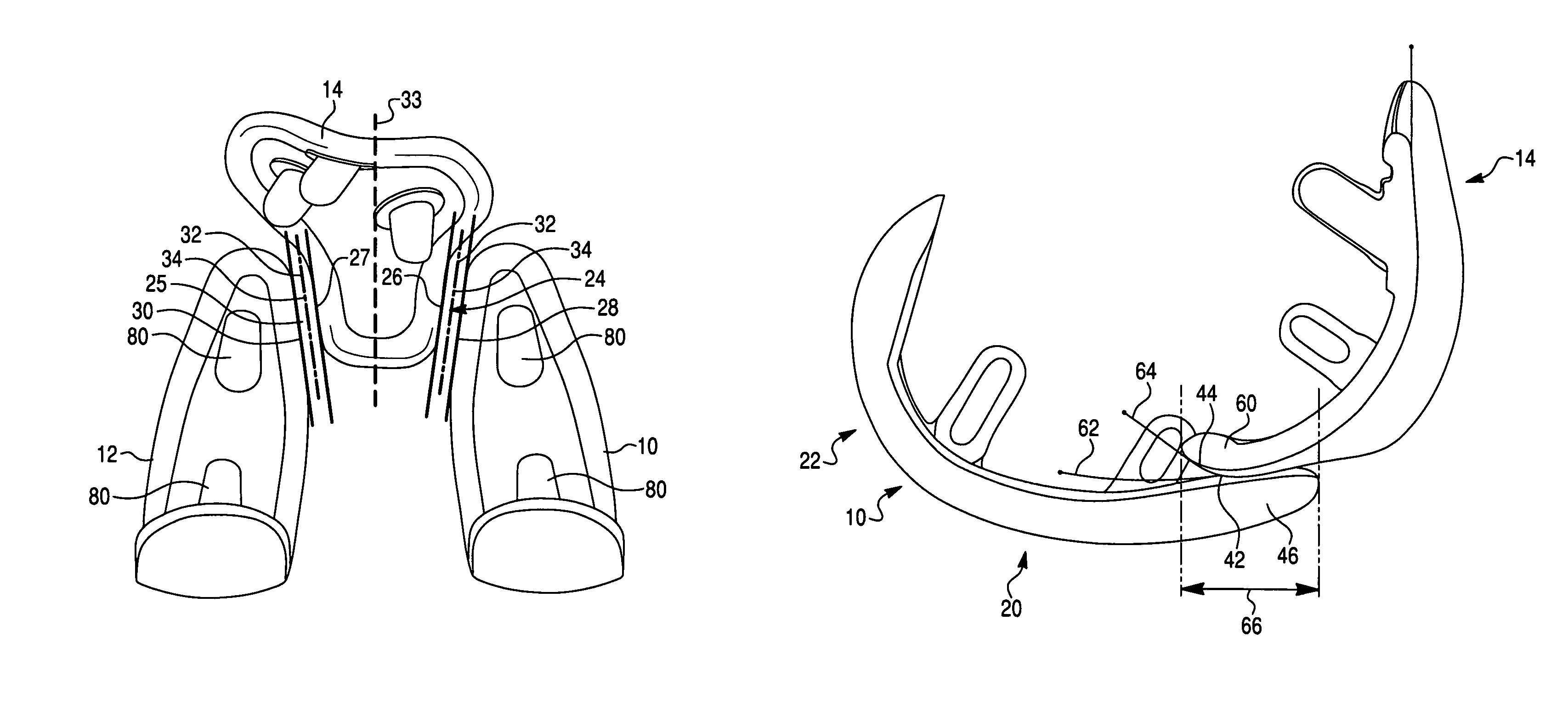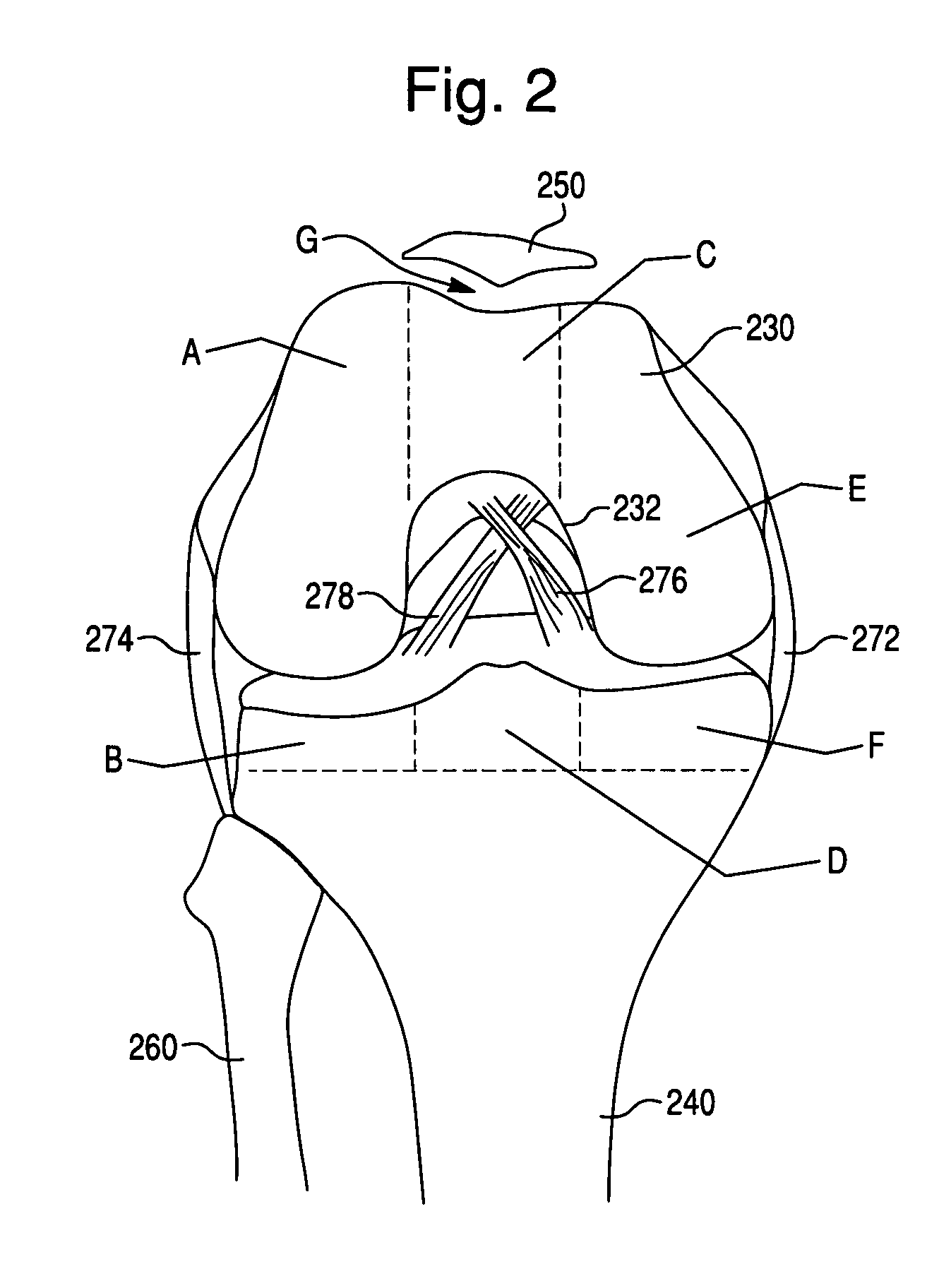Multi-compartmental prosthetic device with patellar component transition
a multi-compartmental, prosthetic technology, applied in the field of prosthetic devices, can solve the problems of inconvenient operation, and inability to achieve fit,
- Summary
- Abstract
- Description
- Claims
- Application Information
AI Technical Summary
Benefits of technology
Problems solved by technology
Method used
Image
Examples
Embodiment Construction
[0032]The following discloses embodiments of the present invention that provide techniques and implants that can be configured to enable individual components of a prosthetic device to be selected and implanted in one, two, or three compartments of a joint with a high degree of accuracy and in any combination that enables the surgeon to vary the geometry and configuration of the implant to create a customized prosthetic device tailored to the patient's unique anatomy, ligament stability, kinematics, and disease state. Moreover, the implant components can be configured to provide a smooth transition of the patella or patellar implant from component to component. Preferred embodiments are illustrated in the drawings. An effort has been made to use the same or like reference numbers throughout the drawings to refer to the same or like parts.
[0033]FIG. 2 is a diagram of a knee joint that includes a distal end of a femur 230, a proximal end of a tibia 240, a fibula 260, and a patella 250...
PUM
 Login to View More
Login to View More Abstract
Description
Claims
Application Information
 Login to View More
Login to View More - R&D
- Intellectual Property
- Life Sciences
- Materials
- Tech Scout
- Unparalleled Data Quality
- Higher Quality Content
- 60% Fewer Hallucinations
Browse by: Latest US Patents, China's latest patents, Technical Efficacy Thesaurus, Application Domain, Technology Topic, Popular Technical Reports.
© 2025 PatSnap. All rights reserved.Legal|Privacy policy|Modern Slavery Act Transparency Statement|Sitemap|About US| Contact US: help@patsnap.com



